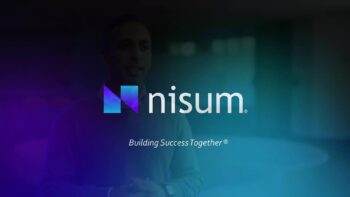If you would have spent any time in my office over the last 3 years, you might think I am a spokes person for the phrases: “what is this company doing” and “shoot I forgot to put sour cream on my burrito”. I seem to have missed the entrepreneur meeting that directed new companies to build great services that are primarily dependent on Facebook and Twitter users. There is no question these two companies are “all the rage”. You can’t read a Mashable or TechCrunch article these days, where the author isn’t wetting themselves over a new feature, which is really just an old feature with minor changes, which brings me to my point: If your service is not strong enough to stand on its own, it’s not strong enough to last.
The whole point of building a business is to create lasting relationships with your users and customers. You spend 1000’s of hours crafting your service but what would happen if suddenly you lost your way to communicate with them? What if your company is acquired or fails, how will you let them know you are working on something new. These are the two primary flaws of building a company that doesn’t utilize direct signup. No matter how many times people say email is dead, they will be wrong 100% of the time, because email is still the most direct way to reach users. Direct signup gives you two essential pieces of information: their name and email address. With this information, you can start to create a relationship and while you may never take a long intimate stroll on the beach together, at least they will know you took the time to recognize them.
Another common problem with current social business strategies, is depending on social contacts to become converted customers. This is a trap. Every minute you spend trying to get new followers, is a minute spent not making money. That is not to say building a follower list is not useful, because it is. However, you have to think about social media in three categories:
First is the distribution channel (Google +, Facebook, Pinterest and Twitter). The distribution channel allows you to update people about goings on with your company. It’s a soft sell no obligation awareness tool that simply lets people know what you are up to. Interestingly, people like to feel connected to the founders and leadership of startups. Distribution channels allow you to create a personality for your business where people identify with you individually, through how your company operates.
Incidentally, it is also the same reason that investors invest in people not ideas. People who effectively imprint themselves on a great service, have an exponentially better track record of success. Pinterest makes this easy for companies that sell products. Create a board, set it and forget it. The focus of your distribution channels should be light interaction with CONSISTANT updates. That doesn’t mean 100 a day, that will just annoy people. When you make an update, let it live and breath. It takes time for people to become aware of a new company, so don’t dwell on the number of likes and retweets. Over time they will grow and that will add value.
Second is the interactive channel (Foursquare, Living Social, Oink and Path). The interactive channel is a call to action for people utilizing services in the real world. It’s the bridge between the online environment and life. Often these are reward based services but a reward doesn’t always mean discount. For example, maybe you’re in San Francisco and you recently watched episode 08 of Foundation featuring Philip Rosedale. You love the idea of Coffee and Power and you set a reminder, so the next time you’re downtown you can stop in for a visit. As a business, Coffee and Power gained a new customer without expenditure. You were able relax for a few minutes in a great space, enjoy a tasty beverage and the atmosphere. Value is created when you create moments people remember. Whether an event, challenge or cup of coffee, positive moments lead to return customers.
Third is the transaction channel (your website). There should be two goals with your social media strategy; drive traffic so users use or purchase your service and make it easy for users to talk about you through their distribution channels. Ultimately, we are in business to make money and the less we have to spend on acquiring new customers the better. This is why building a standalone service with direct signup is so important. The interactive and distribution channels are simply tools to bring people to your site and ultimately convert them to customers.
Building your business around this model allows you to focus on providing a great service. Enabling users to share through social word of mouth advertising is the most powerful and cost effective means of marketing. If you provide great service users will be more than happy to tell their friends. Where by building a company that can stand on its own, speaks for itself and allows you to be more productive.







